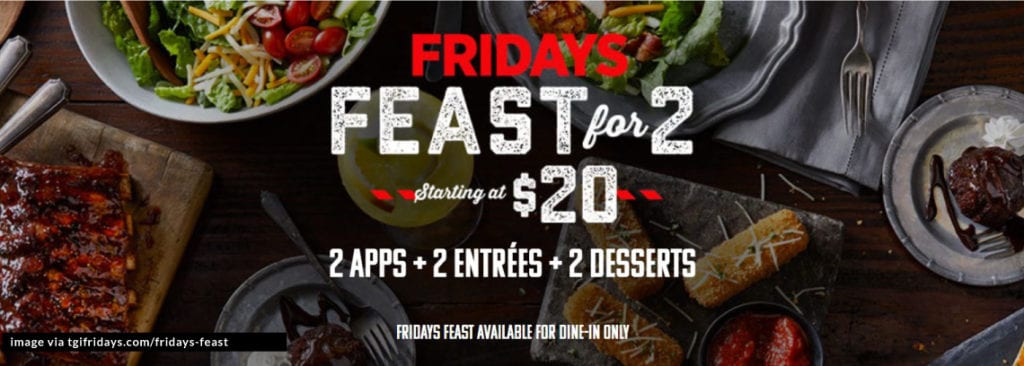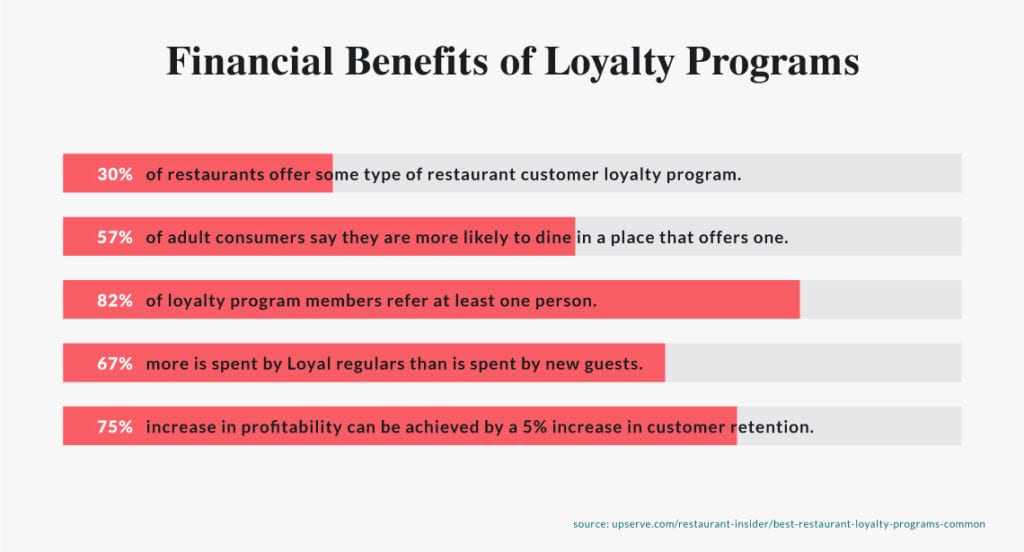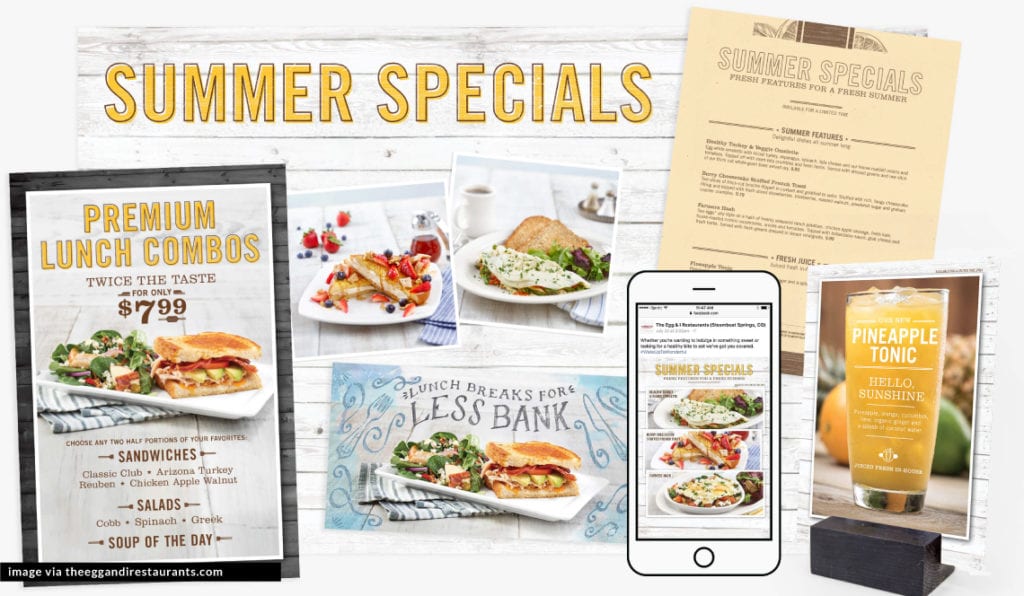There’s hard evidence that shows restaurant promotions can get more guests through your doors and more dollars in your tills. But just running a promotion for the sake of it or at random doesn’t guarantee success for your restaurant. You’ll want to have a look at the data and choose a promotion that will fit both your business and your guests.
Fortunately, we’re here to help. Before we get into the details though, it helps to learn more about the science that makes promotions work. Before getting started, it’s important to know about the different types of promotions you can implement in your own restaurant (and if they’re the right fit for your guests).
The science behind discounts and restaurant promotions
Promotions make sense, right? You get a coupon and say “Wow, I’m going to save some cash and remember to use it later,” right?
There’s actually a lot going on behind the scenes when we’re presented with a sweet deal.
What makes restaurant promotions powerful though? Getting to that answer means taking a look at human psychology.
A study done by Dr. Paul J. Zak, professor of neuroeconomics at Claremont Graduate University, illustrates the impact promotions can have on our brains. The study compared neurologic effects in people who had received discounts for goods and services, versus a control group who were not given any discounts.
People in the group that received a discount experienced a spike in oxytocin, the brain chemical that’s related to love, happiness and stress relief. Measures of the heart, skin and breathing of those who received discounts showed:
- 38% increase in oxytocin
- 32% decrease in respiration
- 11% increase in overall happiness
- 5% increase in heart rate
Crazy, right? Wait, there’s more…
Participants were also asked to rate their happiness after shopping on a scale from 1-10. People who had received discounts were 11 percent happier.
Overall, the study showed that receiving a discount for goods and services makes people happier and less stressed. That’s great and all, but what does this mean for your business?
When guests save money, they’re more likely to feel happier at your establishment. Happy guests are more likely to spend more, make return visits and leave positive online reviews. That means more bums in seats, more sales and more profit.
Types of restaurant promotions
It’s clear that discounts make people happy. But how much time have scientists spent face to face with your guests?
What are the best practical ways to get more people into your restaurant and add more dollars to your bottom-line? Let’s take a look at some of the more popular promotion ideas for restaurants and what the data says about how they work.

Happy hour
Happy hour specials are a classic restaurant promotion designed to bring in the after-work crowd. Discounted drinks and appetizer deals are common happy hour offerings, and the goal is to entice people to come by after a long day, have some drinks or snacks, and then stay for dinner. It’s a classic promotion. But does running these specials actually result in an upsell?
Does it work?
Data says yes. Data from a Nielson report showed that happy hours are the busiest times of day for bars and restaurants that serve alcohol. In fact, the data showed that bars and restaurants in the U.S. generate as much as 60.5 percent of their average weekly sales during happy hour alone. On top of this, the average happy hour check after discounts was $8 more than the average check during other times of the day. Even with discounts on the table, guests tend to spend more on food and drinks during happy hour than any other time.
Off-peak specials
Most restaurants experience a lull in the hour or two before dinner service begins. Since afternoons are a slow time, off-peak specials can encourage more guests to come during those hours. They get a deal, you get tables filled during what would have been a slow period. Win-win.
Does it work?
A study at Cornell University’s Hospitality School was conducted on the effectiveness of restaurant promotions aimed at bringing in guests during off-peak times, but it found that there are too many factors at play to say for sure whether they work.
The only way to know whether this strategy will be effective for your business is by testing it out. A word of caution though, the study did warn that off-peak specials that overlap with peak times could actually cost your restaurant money; for example, if a special runs from 3-4:30 p.m. it can catch afternoon diners, but if it runs from 3-5:30 p.m. the discount might spill over to diners who would have happily paid full prices at 5:30 p.m.
Basically, take your time when planning out these promotions; the goal is to bring in guests who might not have otherwise visited you, not to offer additional discounts to guests who were on their way in anyway.

Two-for-one specials
Buy-one-get-one specials are common when it comes to late-night infomercials. They’re also great for restaurants, often offered for drinks, apps and entrees. Offering guests two for the price of one means they’re getting a deep discount, and that makes people happy. But are you shooting yourself in the foot by giving something away? It’s important to understand what the science says about this kind of promotion and whether or not it will entice your guests to spend more on a dish, a drink or both.
Does it work?
Studies have shown that offering a particularly deep discount on one item might encourage shoppers to impulse-buy more items than they otherwise would have, raising overall revenue. That means the idea that two-for-one discounts might encourage guests to splurge on extra items, like appetizers or desserts, isn’t without merit.
It’s important to note that offering two-for-one deals on expensive entrees with low-profit margins, could get you into trouble quickly. If you offer a two-for-one restaurant promotion, stick with meals that have lower ingredient costs, like pasta dishes or chicken wings. That way, even by offering a BOGO deal, you can still profit from the sale. With this kind of promotion, you have to have your numbers right; make sure that your food cost on the items offered is low enough that the margins on any add ons will replace, or at least offset the loss that you’d be taking on the item offered “for free.”
Think about it this way; treat the promo as one meal—double the food cost that goes into the dish and calculate your percentage based on the price of a single item. Does it look like a healthy enough number that you can recoup by adding on a few other items? Play with the math on these, and be comfortable in your numbers before putting your most popular items up for a massive discount.
Found a successful formula? Try it out with a few different items. Try different phrasing, different times of the day—There are also specials that are related to the number of guests your promotion is supposed to feed, (like ‘Feast for 2’ or ‘Family Special’) that you can try out at your own restaurant. Just make sure when you’re experimenting that you’re keeping an eye on your margins!
Loyalty programs
Loyalty programs are one of the most common restaurant promotions out there. They offer perks like discounts or free items to guests who make return visits to the same restaurant. A good loyalty program can turn a one-off visitor into a loyal fan who returns again and again.
Isn’t that more of a long term business solution than a single promo? Sure, it can be, but when you start to add in days where you offer more points, free stamps, or perks to members, your loyalty program can become a great lever for other programs.
Do they work?
According to Upserve, 30 percent of restaurants have some kind of loyalty program in place, and a whopping 57 percent of adult diners say they’re more likely to choose a restaurant where they get perks for their loyalty, over one without. Loyalty programs work.

However, implementing a loyalty program that’s cost-effective can be a challenge. It’s important to keep in mind that your profit margins likely don’t leave a lot of wiggle room, and offering too many discounts and freebies to a long list of loyal guests isn’t going to help your bottom line. Design your program with that in mind, and consider offering perks that won’t cut into your profits, like guaranteed spots at restaurant events.
Our advice? Get familiar with the types of programs, either by doing your own research or following an example of a successful one to start.
Limited-time offers and menu specials
A great way to experiment with your menu or take advantage of seasonal ingredients is to offer limited-time specials as promotions. Doing so can help increase revenue. You see dozens of examples on a daily basis of this type of program at other establishments, so why not try it out with your own restaurant?

Does it work?
According to a Technomic study, yes. 43 percent of consumers say it’s “important” or “extremely important” to them that restaurants offer new or seasonal items on their menus throughout the year. 26 percent of survey respondents said they’d be willing to pay more for those special items. This gives you an opportunity to create limited-time menu items, with high-profit margins.
There are also a number of studies that link limited-time offers to impulse purchases. Letting guests know that there’s limited availability of the night’s special may encourage guests to jump on an expensive special they might otherwise have passed over, just because they have a short window of opportunity to do so.
Specials can even help your restaurant save money that otherwise would have been wasted. Food waste accounts for a fair amount of expenses in restaurant kitchens and offering a special that utilizes an ingredient you need to use up is a great way to cut down on waste. Remember that chapter in Kitchen Confidential where fish that chefs are looking to offload end up as a salad on the buffet a few days later? We’re not suggesting that you do this (heck, it’s not even true anymore), but think economically without compromising your vision for your menu.
Which restaurant promotions are right for you?
When it comes to choosing unique restaurant promotion ideas that will work for your restaurant, it’ll depend on the type of restaurant you run, the kind of food you sell and who your target market is. Don’t just trust your gut; also take a look at data that tells you what type of promotion is the best fit for your restaurant. Testing and evaluating different promotions can be done by collecting and monitoring data related to the restaurant promotions you try out.
Many POS systems have the capability to collect and report on data related to a specific restaurant promotion, program or segment of your entire guestbook. You can also use data you may have collected previously like customer loyalty and segmentation, to design a custom promotion for your restaurant and promote it with your existing restaurant marketing.
A good restaurant promotion program should benefit both your guests and the restaurant. Using science and data to choose a promotion program is a great way to offer discounts and specials that will make your guests feel like they’re getting a good deal, while at the same time increasing your profits.

